'How do cyclists get big legs?' - you asked Google and we’ve got the answer
Looking to build some muscle through cycling? You may need to hit the gym, too
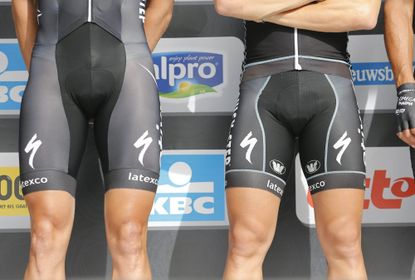
The wondrous tool that is Google autofill can give us a wealth of information about how people perceive cyclists, and the burning questions searchers are desperate to ask.
And thankfully, in most cases we're able to provide the answers.
When it comes to body composition, there seems to be a bit of confusion. Some searchers want to know how cyclists get big, and others want to know how they get small:

That's because cyclists from different disciplines tend to have very different aesthetics, in the same way rugby forwards are the bigger, heavier players whilst the backs are smaller and faster.
The most obviously examples are track sprinters versus Grand Tour general classification contenders.
Track sprinters need to produce maximal power, quickly, on a flat surface, so for them the power half of the power to weight equation is crucial. GC contenders need to climb quickly with as little fatigue as possible, so the weight end is paramount.
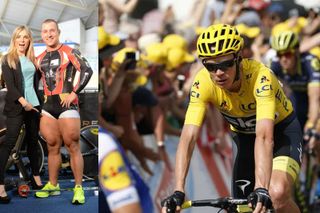
Popular science dictates that human beings are naturally predisposed to certain body types - broadly broken into three categories:
Get The Leadout Newsletter
The latest race content, interviews, features, reviews and expert buying guides, direct to your inbox!
- Ectomorphs - naturally lean, often tall, find it hard to put on weight including muscle
- Mesomorph - naturally predisposed to building muscle
- Endomorph - naturally higher body fat, predisposed to gaining fat
Of course, no one is born ready to grow up looking like Chris Froome or Robert Förstemann - though those who are genetically gifted in the direction that supports their sport will usually find it easier. To get big legs like Förstemann, track sprinters spend time in the gym.
Gym training for cyclists
Let's move slightly away from 'big' and focus on 'strong'. Body builders are big, but it doesn't make them good bike riders.
“To get the neural benefit of strength training, you want to use heavier weights and lower reps. That’s the opposite of what body builders do – they’ll do sets of 10, and lots of exercises per body part. [As a cyclist] your aim is to get the neural benefits of strength training; to work on the way muscle fibres are recruited," explains head coach and owner at Surrey Strength and Performance, Dan Iaciofano.
In lifting heavy, using low reps, Iaciofono - who trains GB Judo players and boxers as well as recreation cyclists - explains: "you’re trying to increase someone’s ceiling of strength, so that in future for the same amount of effort they can be further below it. [This sort of training] is rate coding, you get a benefit in rate of force development - the rate at which those muscle fibres are recruited.
"When you do body building [with more reps], you’re just trying to increase the cell size in the muscle, as opposed to the rate at which they’re firing."
So, effectively if you want to make your muscles 'pump' like a body builder - do lots of reps, but if you want to get stronger, go low reps with heavy weights.
For cyclists who focus on long rides, and climbing, strength training in moderation will help them to maintain a better position on the bike and can reduce fatigue, especially in the mountains. Those seeking fast-twitch speed and sprinting prowess will want to spend more time in the gym.
Recommended exercises will vary depending upon your own body composition, strengths, weaknesses and even flexibility - which is why it's often advised to seek out a strength and conditioning coach.
However, in broad terms, Iaciofono recommends cyclists include "a couple of bilateral knee and hip dominant exercises – squats, deadlifts, Romanian deadlifts, hip thrusts. Then unilateral [single leg] exercises – like step ups, single leg hip thrusts, single leg Romanian deadlifts. If someone is weaker unilaterally then you want to spend a bit more time on that."
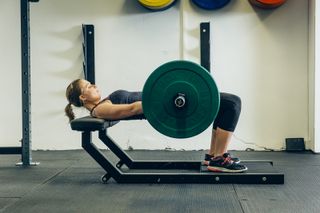
He adds: "Although there’s no direct transfer of upper body work it’s good for health and you might get some core efficiency benefit so [I'd recommend] exercises like press ups, pull ups, and rows."
If you've got competitive goals, the amount of strength training you need to do varies during the year. During the off-season, when it's easier to fit iron pumping in, one to two sessions a week is recommended.
During the peak months, a session every seven to 10 days will suffice for most riders (again, track specialists and sprinters will probably want to do more). Iaciofono recommends keeping weights high and lowering reps to reduce delayed onset muscle soreness (DOMS) which typically occur following the 'pump' body builders seek - that causes swelling in the muscle.
If your routine is going well, and you want to make progress, then adding weight and not reps is suggested: "You don’t want to venture above 4-5 reps," he says - suggesting that other additions could be "velocity lifts – jump squats, banded squats, or plyometrics".
Strength training on the bike
Strength training on the bike is particularly effective as it recruits the exact muscles that you need to work in heated moments when practising your chosen sport.
Big gear efforts are the first port of call here - particularly standing starts, which involve coming to an almost stop, then sprinting against the largest resistance you can muster.
For absolute strength, go for one 20-second sprint, every five minutes or more. To practice being able to follow multiple attacks in a situation such as a criterium race, try sets of 20 seconds sprint/40 seconds recovery, repeated four to six times.
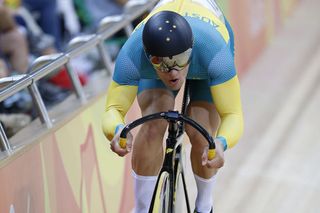
Bear in mind that these sorts of efforts should be spread out, with plenty of recovery between them to allow for adaptation, and they're off the menu if you've got a niggle or injury.
Supplements for building muscle and speed
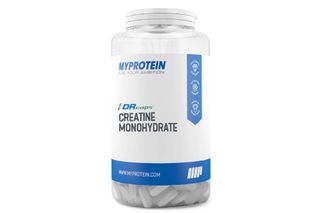
Finally, there are a couple of supplements that may help you out - neither will build muscle on their own, but they can facilitate the process when combined with exercise. Both of them are recommended by British Cycling and are entirely legal for racing cyclists to use.
Beta Alanine is recommended for cyclists seeking extra 'kick'. It's available in food, but in low doses. It raises concentration of carnosine, which ultimately reduces fatigue during explosive efforts.
The big one, though, is Creatine. Also naturally available in food, there's about 2g in a point of red meat and 4.5g per pound of salmon.
Creatine increases muscle levels of phosphocreatine, and helps to fuel muscles during intense activity.
"On top of a diet that hits all the overall requirements – is high enough in carbohydrates, has enough protein - then Creatine and Beta Alanine are the most research proven supplements on the face of the planet," says Iaciofono.
"Most people will get a performance benefit from them. If they don’t, they may be getting enough of them in their diet, or just haven’t responded."

Thank you for reading 20 articles this month* Join now for unlimited access
Enjoy your first month for just £1 / $1 / €1
*Read 5 free articles per month without a subscription

Join now for unlimited access
Try first month for just £1 / $1 / €1
Founded in 1891, Cycling Weekly and its team of expert journalists brings cyclists in-depth reviews, extensive coverage of both professional and domestic racing, as well as fitness advice and 'brew a cuppa and put your feet up' features. Cycling Weekly serves its audience across a range of platforms, from good old-fashioned print to online journalism, and video.
-
 Injured Wout van Aert apologises to 'all those I gave sh*t to for using spacers under their stems'
Injured Wout van Aert apologises to 'all those I gave sh*t to for using spacers under their stems'The Belgian has taken to using them himself – at least for now
By James Shrubsall Published
-
 Liège-Bastogne-Liège match-up: Tadej Pogačar and Mathieu van der Poel finally meet again
Liège-Bastogne-Liège match-up: Tadej Pogačar and Mathieu van der Poel finally meet againDemi Vollering returns to defend her women's title on the same day
By Adam Becket Published
-
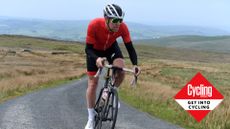 'Will cycling change my body shape?' – you asked Google and we’ve got the answer
'Will cycling change my body shape?' – you asked Google and we’ve got the answerNew to riding bikes and worried your new found pedal pushing habit will turn you into the incredible hulk? We've got the answers...
By Michelle Arthurs-Brennan Published
-
 ‘How do cyclists pee whilst racing the Tour de France?’ – you asked Google and we’ve got the answer
‘How do cyclists pee whilst racing the Tour de France?’ – you asked Google and we’ve got the answerSometimes they just need a little push from a team-mate to keep rolling...
By Anna Marie Hughes Last updated
-
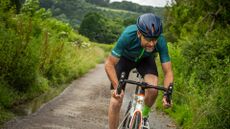 'Do cyclists live longer?' - you asked Google, and we've got the answer
'Do cyclists live longer?' - you asked Google, and we've got the answerThe fountain of eternal youth hasn't been located yet, but the bike in your garage is a good place to start
By Michelle Arthurs-Brennan Published